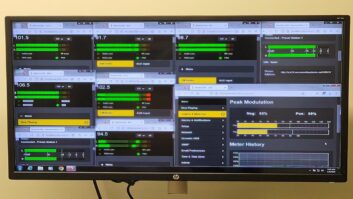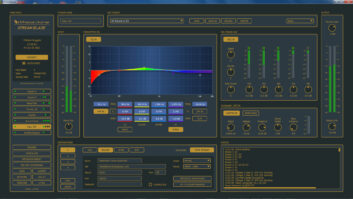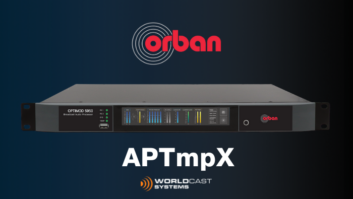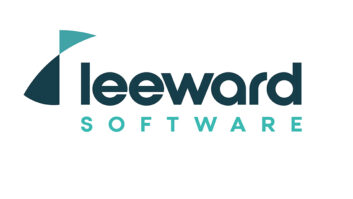COLUMBIA, Md. In the PPM world, if you’re not encoding, your listening isn’t counted.
So how do you know that your Portable People Meter encoder is encoding the right station signal? And what if you are transmitting in analog and digital, have multicast channels or are streaming a signal over the Internet? What are the ramifications for PPM then?
Results collected through the PPM are now the Arbitron “currency” in 14 markets, and 11 more markets are due to come online by September. Once a market has been converted, PPM data is used for transactional purposes like buying and selling; the PPM data becomes the “coin of the realm” replacing the data collected by the traditional diary method.
Radio World News Editor/Washington Bureau Chief Leslie Stimson spoke with Dave Forr, director of U.S. encoding operations, about what Arbitron engineers and other employees do to prepare PPM encoders, what happens when units arrive at a station, how they’re activated and how encoding information is verified.
Forr, an electrical engineering graduate of Penn State, returned to Arbitron in 2000. He began his 21-year audience research career in the R&D division of CBS, where he worked in the consumer product evaluation laboratory and focused on video gear.
RW: What’s your responsibility regarding PPM encoders?
Forr: Our group is fundamentally responsible for making sure that we have a market encoded in time for our pre-currency delivery of data. … We’re responsible for making sure that we get the stations on board. Not just the technical side of it; we work with sales, we work with station management to get their cooperation.
Dave Forr: ‘The Coder’

Dave Forr. ‘We’ll work with [the engineer] to understand where best to put the encoding equipment to make sure that every possible way that this station has of getting its product out to its customers is covered with encoding.’ Photo by Leslie Stimson
This is Dave Forr’s second stint at Arbitron, where he’s now director of U.S. encoding operations.
He began his career at CBS, where he worked mostly in a consumer product evaluation laboratory focusing on video gear. Forr said the lab developed the first automated, objective video tape evaluation system adopted by JVC, which licensed the VHS tape format.
Forr worked peripherally in the early development of HDTV formats and technologies. “Working at the lab was, for an engineer, like going to work to play if you could afford the toys.”
From there, he went to work for AGB as an engineer designing TV ratings technology. He took over AGB’s field operations as director of U.S. field engineering.
Forr first went to work for Arbitron in 1988 to help roll out the national ScanAmerica installation and run the operations technical support department and repair facility. Arbitron’s ScanAmerica was designed to package national TV audience ratings with household purchase data. Arbitron dropped ScanAmerica and got out of the terrestrial TV and cable ratings business in the early 1990s.
He was involved with some of the early field tests for PPM in 1992 and 1993.
Forr left Arbitron to work for SRI in New Jersey where he built an engineering organization to develop TV ratings equipment in a bid — underwritten by the major TV networks — to develop a system to compete with Nielsen.
He returned to Arbitron in 2000 to undertake the rollout of encoding equipment in the U.S. in support of PPM.
— Leslie Stimson
Encoding operations was split off and combined with another [Arbitron] group that sets up the PPM equipment and sends it out to the households. I can tell you about that because I set it up.
At the very beginning of this process is the identification of the stations that we’re going to invite to encode. There’s a formula for that … but basically all of the FCC-licensed stations in the market are invited to encode, regardless of their subscriber status.
RW: Once stations get your letter, how long does it typically take until they’re ready to encode?
Forr: Before our currency date, we have two months of pre-currency. Seven months before that we start the encoding process. And two months before that the invitation letter to encode goes out. Thirteen months total.
We send these letters out, we invite them to encode. When they respond, we send an encoding agreement. If they’re subscribing to the service, that encoding agreement is part of their subscription paperwork. If they’re not, we ask them to sign a simple document that basically says, “You’re getting this equipment. Arbitron maintains ownership of it. You’re not going to reverse-engineer it.”
We don’t sell the equipment in the U.S.; we license it.
RW: Has anyone tried to reverse-engineer a PPM encoder?
Forr: Not to my knowledge. I know of some people who have tried to take the covers off, but we have tamper-proof screws and warranty stickers over the seams. But I can say this because I am an engineer, we like to open it and see what’s inside. … The core of the encoding engine is burned into silicone. It’s not something you can download and look at on your PC.
Once the stations sign an encoding agreement, we’ve got internal systems that put that information into our systems. Then encoding ops gets notified that this station is signed up and they’re ready to go.
At that point we’ll talk to the engineer on the phone. We’ll ask him about his station, we’ll ask how it’s configured, what kind of equipment he’s got in his broadcast chain, how it all interconnects.
We’ll spend a fair amount of time on the phone developing a block diagram of his station. We’ll work with him to understand where best to put the encoding equipment to make sure that every possible way that this station has of getting its product out to its customers is covered with encoding.
We don’t want them to have an emergency automation system at their transmitter site that’s not covered with encoding because, if their main studio goes down, they have to go to their automation system up on the mountain. Their station’s still on the air but they might as well turn off the transmitter and save electricity because they’re not getting credit for it if it’s not encoded. That’s the impression that we try to make on the engineers: We have to make sure that this is all covered.
RW: When you’re asking them about the transmission chain, do you care more about what brand of equipment is in there or about the type of equipment in the chain?
Forr: Both. More the type than the brand, but we capture all of that information so that we have it in our records. Typically we’ll have to probe, because the backup automation system is just “out of sight, out of mind.”
The benefit of hiring broadcast engineers from the industry is they understand this and they know the “yeah, buts,” they know all of those [questions] to ask and probe for when we’re talking to the station engineers. …
What we learned in the early, early days of the trials in Philly and Houston was, when we asked them, “Tell us every way you have of getting this [the signal] out,” they’ll often say, “We haven’t used that thing for 15 years, I forgot about it.”
[But] if their studio goes down, they’re running off that back-up automation system until they can get it back up and running.
RW: They need a back-up encoder for that.
Forr: That’s right. So we make sure we cover all of the possible ways of getting their signal out with encoding. And some of the engineers at the stations are reluctant sometimes to encode those.
A good example was a major news/talk station in Houston a couple years ago. … Same situation. “Forget about that, we never use it.”
This was the conversation: “What station are people going to listen to in Houston if a major disaster hits?” This was before Hurricane Ike came through. “Well, they listen to our station. We’re news/talk.” “Where your studio is, it could be prone to a hurricane impact. Where are you going to go if that studio goes down?” “We’ll go to this [backup] automation system.” “And what happens when the whole town is listening to just your radio station and guess what? You’re not going to get credit for it.” “Maybe we ought to install one there!” …
We provide not just an encoder for every path, but an encoder and a backup for every path. If the station has their own primary path of getting a signal out, and they have a backup path to get that signal out, we’ll put an encoder on both of them.
Some stations only have one signal path going out to air. If that’s the case, we’ll still provide a backup encoder and tell them to daisy-chain them and just leave one in bypass. That way, if there’s ever a problem and it’s the encoder — as surprisingly infrequent as that is — they’re still not down while we ship them a new encoder.
RW: Are you providing encoders and backups to Arbitron subscribers only, or to every station in a market?
Forr: Every [AM-FM] station, regardless of their subscriber status, gets two encoders and a monitor free of charge. That way they stay on the radar screen, even if they’re a small station and are not a subscriber. …
[W]e provide a monitor for every station. So even if they have a primary signal path, a backup signal path, a backup to the backup and an automation system on the mountain, they may have four encoders, to make sure that they’re covered in every way. But only one of those is ever on the air at a time. …
We tell them to take this in-station monitor and connect it to the return air feed … the feed that they have their own alarm system set up to. …
We’ve designed this monitor to be able to interface with all [alarm] systems … so that it can trip a trigger on a switch or on a serial port on the back that can interface to however that station has decided to alert their personnel whenever there’s a problem with the station.
RW: What happens if there’s a problem with the encoder?
Forr: Their first line of defense is to switch to their backup right away. Don’t call Arbitron, don’t do anything; get the encoding back on the air first.
After that they have a couple of numbers they can call. We have set up “ownership” of markets within our group; an Arbitron engineer is assigned several markets. The engineer at the station knows him, he’s talked to him. He’s worked with him during the installation. He’s got his number; typically he’s got his cell number too. So he’ll call. If he doesn’t reach that person we’ve got a toll-free 877 number that they can call. …
Every market engineer has backup assigned to them. Someone will get that call. In the evenings, after hours, that number routes to our customer service people. Even in the middle of the night, if someone calls and says, “Hey I’ve got a problem,” the folks that answer that phone have a list of “If, then” questions to ask. …
If after that short list of questions is satisfied the alarm’s still going off, we have an on-call engineer assignment that rotates throughout our group on a weekly basis. … We call it the bat phone. If it’s your turn to carry the bat phone that week, it’s up to you to have it where you can hear it 24/7. If someone from customer service calls and says, “I’ve got an engineer on the phone … we’ve walked through [the questions], he’s still got an alarm, I’m going to pass him off to you.” We’ll take that call, troubleshoot and get him back on the air with encoding.
RW: Getting back to the encoder configuration process, where are we on that?
Forr: Let me back up to where we left off. We’ve talked to the engineer and develop a block diagram of that station. We’ll send that to the engineer and have him look at it and say, “Yes, this looks like my station.” (Sometimes they say, “Cool, I’ve been wanting to do one of these for a long time, can I keep this?”)
We get them to confirm that yes, this how we’re set up, this is everything and where we’ve designed the encoder placement is [acceptable]. At that point we generate an electronic work order that goes over to the [other Arbitron] group we were talking about, for fulfillment.
In the work order, we’ll tell them: “These are all parameters that we’ve loaded into it. On the display we want it to read WXYZ. We want it to be a digital encoder configured for 44.1 kHz sample rate and all of the details that involves the interface of the station.”
The engineer who has worked with the station specifies exactly how it’s to be set up so that it interfaces perfectly when it gets there. … We want the station engineer to be able to take it out of its box, put it in the rack, run his audio through it, plug it into power, turn it on. That’s it. There’s no user-configurable parameters to be set up. …
[Configuration] is where the code assignment happens. That’s the core of this whole process because, at the end of the day, if you don’t know where that code’s coming from that the PPM receives, everything else is academic. This configuration process is where we say, “This encoder gets code number 1234.”
In our system, no two encoders ever have the same code. This encoder gets coded 1234. We tell our system that code 1234 is WARB’s primary encoding chain and they’re FM.
That’s where that marriage happens. When the data collection happens in the evening from all the PPMs, [Ed. Note: when panelists dock their meters at night and audio exposure data is sent to Arbitron] — when PPM says someone was exposed to code 1234, the PPM doesn’t know that it’s WARB; it just knows that it got code 1234. Then in our system, that’s married up to code 1234 equals WARB’s primary FM chain. That’s what goes into reports.
That part of this configuration process is critical. Built into that process, we have a quality assurance rule that says the person who sets up an encoder can’t be the one to verify it. There are verification and re-verification processes built in there. …
RW: To make sure that that person didn’t assign the wrong number.
Forr: Yes. After we’re satisfied that the quality is right, the code is right, the page of configuration parameters is right, all of that is verified, it then goes out the door to be delivered when it was specified to be delivered.
We get a return receipt from UPS so that our engineers know when it hit the dock. We’ll usually give them a day or two and then we’ll call and say, “I see that your equipment has arrived. I’m calling to see if you need any help or if you have any questions.” What that really is, is us saying, “Let’s get this done. I know this stuff is there.”
RW: Because it’s up to them to install it, not you …
Forr: They’re not going to let us start pulling wires. … In the early days of the trials, we hand-delivered a lot of this stuff and went to the station and were there when it was installed. We didn’t do much. … They didn’t want us in there.
Sometimes it takes a little prodding but we’ll get them to install the stuff. They’ll let us know, “I’ve got all the stuff installed. It’s all turned on. … I can’t hear it. … My green light on the monitor is on. Now what do we need to do?”
RW: How long does it take to get the encoding process going at the station?
Forr: We collect two minutes of audio, minimum [for each signal]. We’ll collect more if time allows in the interest of completeness. Even so it’s typically not more than five minutes. …
We’ll have them send us audio over the phone. … We ask them to use a return air feed for this, the same as what their monitor is seeing. “Bring your station up on a pair of monitor speakers and lay the phone down. Come back in a few minutes.”
We need to do that for every encoder. Not just the primary that’s on the air. … Now if they’ve got an encoder up on their automation system on the mountain, that typically has to wait until the wee hours of the morning. … [T]hey can send us audio from that into our voicemail system.
Arbitron PPM Encoding Best Practices

Excerpts from the Arbitron PPM Encoding Handbook, available at www.arbitron.com/downloads/ppm_encoding_handbook.pdf.
- • The station will need to monitor encoding at all times. Arbitron’s encoders seldom experience mechanical failure. Most un-encoded intervals result from scheduled or unscheduled transmitter maintenance or other changes to the station’s transmission facilities, during which the station inadvertently excludes the encoder from the transmission path.
- • The encoding monitor should be connected to an alarm system paging the station’s engineer.
- • Encoding equipment is configured for an individual station (i.e.: an AM station; an FM station; an HD-multicast station; or an Internet stream of an AM station, FM station, or HD-multicast station). Encoding equipment should not be exchanged between stations — even if those stations simulcast with one another.
- • Some engineers plug the primary and backup encoders into power strips that can be remotely shut on and off. This helps ensure the engineer’s ability to switch remotely from the primary encoder to the backup encoder, in the event that a remote switching becomes necessary.
- • The station’s engineer should be mindful that encoders require adequate ventilation. Arbitron recommends allowing a space for ventilation between any two encoders.
- • Should an Arbitron encoder fail, the encoder will still pass audio.
The code is so robust that we can recover that and analyze it off of voicemail the next morning. We’ll know if they were cheating because no two encoders ever have the same code. We know which one went into the automation system on the mountain and we’ll be able to see if that’s the right code we’ve got coming back.
After we’ve gotten through all of these for their AM or FM, now we need them to verify their HD2, give me the primary and the backup… for your HD3, give me the primary and the backup. Go to your Internet stream, given me the primary and the backup.
RW: There’s an encoder for the Internet stream as well.
Forr: Absolutely. Even if they’re simulcast we try to put separate encoding on their Internet streams, so that if at some point in the future they’re not simulcast, we’ll be able to back that information out. …
What we’re doing when we’re collecting this information [is] looking for two things.
We’re bringing this into a tool that can extract the code and analyze how deeply it’s embedded in the audio. We’re analyzing the quality of the embedding that has occurred through this encoder.
We’ll know if the signal levels they’re sending into the encoder are right. We’ll know if there’s distortion in their audio that could impact the encoding. …
The other thing we’re looking for is … remember I told you we want to verify the right code is with the right station? This is another verification step. We verify that I’m talking to the engineer from WARB and going into the system and looking at the code for WARB, which should be code 1234.
I’ll look at the analysis tool and it says you’re getting code 1234 over the phone from this audio … We’ll capture that audio and file it. We’ll attach it to the work order so if there are ever any questions we have an audit trail. We’ll also attach the block diagram to the work order. …
After we’ve done all of that, the engineer who collected this information puts that into the work order and passes it off. Now it goes through … a verification of his work. A different person will now take and open these files … [He’ll] run them back through the analysis tool, compare that output to the output that the first engineer got and make sure that it’s right, make sure that the quality is good and make sure that the right code is assigned to the right station.
So it’s not until that final QA process that involves the verification of all the information we brought back over the phone is done that we say this station is ready for reporting.
The reason we do that … with all of the consolidation that’s going on, you could have an engineer responsible for six stations and they’re all running out of [one] room. It’s never happened, but it wouldn’t be inconceivable that that engineer put the wrong encoder in the wrong station. What we’ll do when we configure them, we’ll put a tag on the outside that says “This is for WARB FM primary chain.” So it will be real clear where this encoder’s to go. And when it’s powered up, the display will say “WARB FM primary.”
Over and over again we emphasize with the equipment where it’s supposed to go, but at the end of the day what we want to know is that we’re getting WARB’s station over the phone and that’s WARB’s code that’s coming into that audio.
Now we’re satisfied that the station is ready for reporting.
RW: What does “ready for reporting” mean?
Forr: We’ll flip a switch in our systems — click a box is really what it is — and say we’re good to go. At that point our report processing people will include that data in the PPM numbers.
RW: What happens to the PPM equipment when a station is sold?
Forr: When stations sell and call letters change… it’s nice because we don’t have to send them a new encoder. There’s an access port [on the unit] for a memory card.
We can send them a new set of parameters on the memory card that will update their display. … All they have to do is take this [card] put it in … the green light will flash a couple of times. The display will say “succeeded,” and they’ll take that out and close up the port. They don’t have to tear everything out when they sell the station.
RW: How many engineers do you have in the encoding division?
Forr: That’s not something I can discuss.
RW: When you hire broadcast engineers what qualifications are you looking for?
Forr: I’m looking for broadcast engineering background. … We’ve got folks on staff here who have been with the PPM project for a long time and have worked with the station engineers here enough that they understand them and have been indoctrinated. That’s the exception; the rule is we’re looking for people from the industry, because they can speak the language. They know what to ask for.












